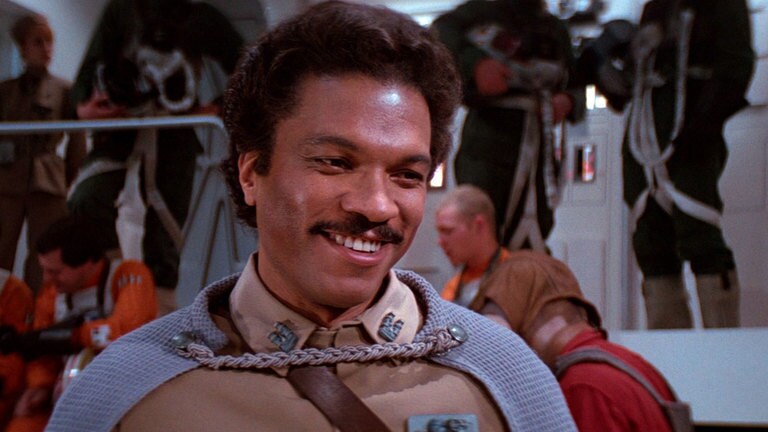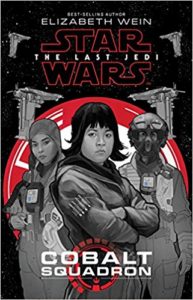Almost forty years ago, Lando Calrissian appeared in Star Wars, immediately becoming, as Donald Glover recently put it, “the only black guy in the universe.” Since then, a number of actors of color have joined Billy Dee Williams’s iconic character in the galaxy far, far away, including Temuera Morrison and Daniel Logan of the prequel trilogy, the incredibly diverse ensemble cast of 2016’s Rogue One, three of the starring actors in the sequel trilogy, and of course, Glover himself as young Lando in the upcoming Solo, for which he will be joined by Thandie Newton. As we celebrate these victories, however, it quickly becomes clear that Lucasfilm has only recently fielded casts that don’t merely feature token actors of color; white, male actors still make up the vast majority of the Star Wars universe. And behind the camera, those who have helmed the franchise’s films are overwhelmingly white and male.

Billy Dee Williams broke new ground as Lando Calrissian.
It has almost become a truism that to tell diverse stories, the creators of those stories must be diverse, too–but it’s a concept that’s proven by fact. One needs only to look at recent films directed by people of color to find proof that these movies feature more diverse casts: Creed, Life of Pi, and the upcoming A Wrinkle in Time. Directors of color find it imperative to tell stories starring people who look like them in a way that white directors simply don’t. If white creators found diversity at the forefront of their minds, then we would have had racial parity on screen a long time ago. Continue reading

 This is fine. Absolutely everything is fine.
This is fine. Absolutely everything is fine. If you came out of The Last Jedi hoping to learn more about Paige or Rose Tico, Cobalt Squadron by Elizabeth Wein, is likely the book you’ll gravitate towards. While on a mission, Paige and Rose’s ship is boarded by a smaller one crewed by two people with a desperate mission. Their planet is ruled by and treated poorly by the First Order and they fear that their people might die if the New Republic doesn’t find a way to aide them. Knowing there’s little the Senate will do, General Organa tasks Cobalt Squadron with seeing while they can do… all while, elsewhere in the galaxy, Starkiller Base is rapidly approaching completion.
If you came out of The Last Jedi hoping to learn more about Paige or Rose Tico, Cobalt Squadron by Elizabeth Wein, is likely the book you’ll gravitate towards. While on a mission, Paige and Rose’s ship is boarded by a smaller one crewed by two people with a desperate mission. Their planet is ruled by and treated poorly by the First Order and they fear that their people might die if the New Republic doesn’t find a way to aide them. Knowing there’s little the Senate will do, General Organa tasks Cobalt Squadron with seeing while they can do… all while, elsewhere in the galaxy, Starkiller Base is rapidly approaching completion.